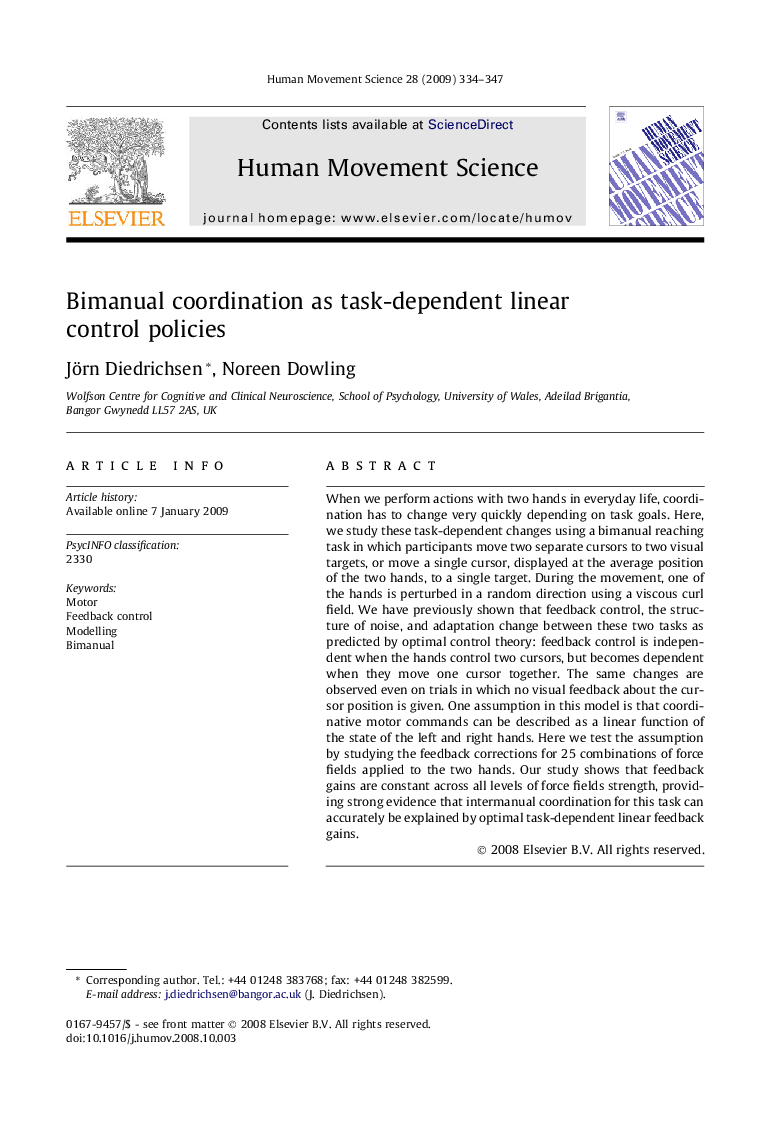| Article ID | Journal | Published Year | Pages | File Type |
|---|---|---|---|---|
| 928844 | Human Movement Science | 2009 | 14 Pages |
When we perform actions with two hands in everyday life, coordination has to change very quickly depending on task goals. Here, we study these task-dependent changes using a bimanual reaching task in which participants move two separate cursors to two visual targets, or move a single cursor, displayed at the average position of the two hands, to a single target. During the movement, one of the hands is perturbed in a random direction using a viscous curl field. We have previously shown that feedback control, the structure of noise, and adaptation change between these two tasks as predicted by optimal control theory: feedback control is independent when the hands control two cursors, but becomes dependent when they move one cursor together. The same changes are observed even on trials in which no visual feedback about the cursor position is given. One assumption in this model is that coordinative motor commands can be described as a linear function of the state of the left and right hands. Here we test the assumption by studying the feedback corrections for 25 combinations of force fields applied to the two hands. Our study shows that feedback gains are constant across all levels of force fields strength, providing strong evidence that intermanual coordination for this task can accurately be explained by optimal task-dependent linear feedback gains.
